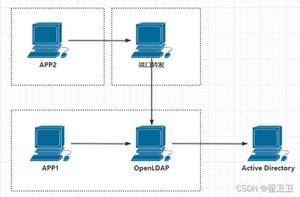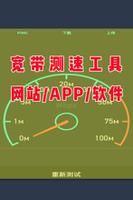为ctc_loss将Tensor转换为SparseTensor
有没有办法将密集的张量转换为稀疏的张量?显然,Tensorflow的Estimator.fit不接受SparseTensors作为标签。我想将SparseTensors传递到Tensorflow的Estimator.fit中的一个原因是能够使用tensorflow
ctc_loss。这是代码:
import dataset_utilsimport tensorflow as tf
import numpy as np
from tensorflow.contrib import grid_rnn, learn, layers, framework
def grid_rnn_fn(features, labels, mode):
input_layer = tf.reshape(features["x"], [-1, 48, 1596])
indices = tf.where(tf.not_equal(labels, tf.constant(0, dtype=tf.int32)))
values = tf.gather_nd(labels, indices)
sparse_labels = tf.SparseTensor(indices, values, dense_shape=tf.shape(labels, out_type=tf.int64))
cell_fw = grid_rnn.Grid2LSTMCell(num_units=128)
cell_bw = grid_rnn.Grid2LSTMCell(num_units=128)
bidirectional_grid_rnn = tf.nn.bidirectional_dynamic_rnn(cell_fw, cell_bw, input_layer, dtype=tf.float32)
outputs = tf.reshape(bidirectional_grid_rnn[0], [-1, 256])
W = tf.Variable(tf.truncated_normal([256,
80],
stddev=0.1, dtype=tf.float32), name='W')
b = tf.Variable(tf.constant(0., dtype=tf.float32, shape=[80], name='b'))
logits = tf.matmul(outputs, W) + b
logits = tf.reshape(logits, [tf.shape(input_layer)[0], -1, 80])
logits = tf.transpose(logits, (1, 0, 2))
loss = None
train_op = None
if mode != learn.ModeKeys.INFER:
#Error occurs here
loss = tf.nn.ctc_loss(inputs=logits, labels=sparse_labels, sequence_length=320)
... # returning ModelFnOps
def main(_):
image_paths, labels = dataset_utils.read_dataset_list('../test/dummy_labels_file.txt')
data_dir = "../test/dummy_data/"
images = dataset_utils.read_images(data_dir=data_dir, image_paths=image_paths, image_extension='png')
print('Done reading images')
images = dataset_utils.resize(images, (1596, 48))
images = dataset_utils.transpose(images)
labels = dataset_utils.encode(labels)
x_train, x_test, y_train, y_test = dataset_utils.split(features=images, test_size=0.5, labels=labels)
train_input_fn = tf.estimator.inputs.numpy_input_fn(
x={"x": np.array(x_train)},
y=np.array(y_train),
num_epochs=1,
shuffle=True,
batch_size=1
)
classifier = learn.Estimator(model_fn=grid_rnn_fn, model_dir="/tmp/grid_rnn_ocr_model")
classifier.fit(input_fn=train_input_fn)
:
事实证明,此解决方案从这里将密集张量转换为稀疏张量:
indices = tf.where(tf.not_equal(labels, tf.constant(0, dtype=tf.int32)))values = tf.gather_nd(labels, indices)
sparse_labels = tf.SparseTensor(indices, values, dense_shape=tf.shape(labels, out_type=tf.int64))
但是,我现在遇到了ctc_loss引发的错误:
ValueError: Shape must be rank 1 but is rank 0 for 'CTCLoss' (op: 'CTCLoss') with input shapes: [?,?,80], [?,2], [?], [].我有这段代码将密集标签转换为稀疏:
def convert_to_sparse(labels, dtype=np.int32): indices = []
values = []
for n, seq in enumerate(labels):
indices.extend(zip([n] * len(seq), range(len(seq))))
values.extend(seq)
indices = np.asarray(indices, dtype=dtype)
values = np.asarray(values, dtype=dtype)
shape = np.asarray([len(labels), np.asarray(indices).max(0)[1] + 1], dtype=dtype)
return indices, values, shape
我转换y_train为稀疏标签,然后将值放在内SparseTensor:
sparse_y_train = convert_to_sparse(y_train)print(tf.SparseTensor(
indices=sparse_y_train[0],
values=sparse_y_train[1],
dense_shape=sparse_y_train
))
并将其与SparseTensor在grid_rnn_fn内部创建的内容进行比较:
indices = tf.where(tf.not_equal(labels, tf.constant(0, dtype=tf.int32)))values = tf.gather_nd(labels, indices)
sparse_labels = tf.SparseTensor(indices, values, dense_shape=tf.shape(labels, out_type=tf.int64))
这是我得到的:
对于sparse_y_train:
SparseTensor(indices=Tensor("SparseTensor/indices:0", shape=(33, 2), dtype=int64), values=Tensor("SparseTensor/values:0", shape=(33,), dtype=int32), dense_shape=Tensor("SparseTensor/dense_shape:0", shape=(2,), dtype=int64))对于sparse_labels:
SparseTensor(indices=Tensor("Where:0", shape=(?, 2), dtype=int64), values=Tensor("GatherNd:0", shape=(?,), dtype=int32), dense_shape=Tensor("Shape:0", shape=(2,), dtype=int64))这使我认为ctc_loss似乎不能SparseTensors作为具有动态形状的标签来处理。
回答:
是。可以将张量转换为稀疏张量并返回:
设sparse稀疏张量dense为密集张量。
dense = tf.sparse_to_dense(sparse.indices, sparse.shape, sparse.values)zero = tf.constant(0, dtype=tf.float32)where = tf.not_equal(dense, zero)
indices = tf.where(where)
values = tf.gather_nd(dense, indices)
sparse = tf.SparseTensor(indices, values, dense.shape)
以上是 为ctc_loss将Tensor转换为SparseTensor 的全部内容, 来源链接: utcz.com/qa/413451.html







